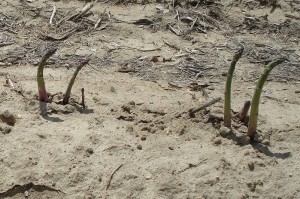Protectant (contact) fungicides, such as the inorganics (copper, FRAC group M1) and sulfur (FRAC code M2); the dithiocarbamates (mancozeb, M3), phthalimides (Captan, M4), and chloronitriles (chlorothalonil, M5) are fungicides which have a low chance for fungicide resistance to develop. Protectant fungicides typically offer broad spectrum control for many different pathogens.
Why wouldn’t fungi develop resistance to protectant fungicides? Protectant fungicides are used all the time, often in a weekly manner throughout much of the growing season.

